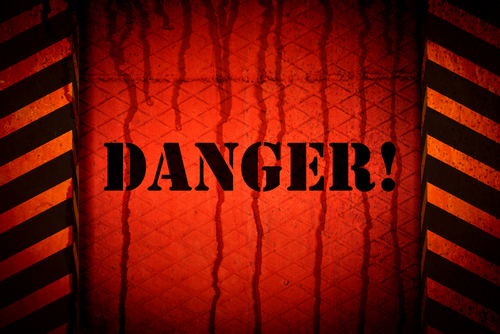 |
6) One area of debate during the discussions about adopting the GHS was the most effective color to be used for the borders around the required pictograms on labels for domestic products. Although the GHS provides the option of using black ink instead of red for pictogram borders, studies showed the color red “was perceived to indicate the highest degree of hazard and was shown to increase the perceived hazard of a word presented in color (e.g., DANGER in blue is perceived as less hazardous than WARNING in red).” As a result, in the United States, red is required as the border color on all label pictograms, whether for domestic use or export, because it is considered to “reflect the greatest degree of hazard.”
7) As the United States transitions from material safety data sheets (MSDSs) to Safety Data Sheets (SDSs) under the GHS, the new standardized, 16-section format allows for the presentation of information in a consistent sequence. One of the most important aspects of the new format is that in a chemical emergency, the information needed first by exposed workers and first responders is at the beginning of the SDS and can be quickly and easily located and acted upon. This standardized SDS presents information in a manner consistent with that included in the voluntary industry consensus standard for safety data sheets (ANSI Z400.1).
Learn an overview of the revised hazard communication standard with a focus on the new MSDS format, the new label requirements and training and much more during our in-depth webinar on March 24, 2014.
Register Now
8) SDSs will also retain and require the threshold limit values (TLVs) established by the American Conference of Government Industrial Hygienists (ACGIH) and the classification listings of the International Agency for Research on Cancer (IARC) and the National Toxicology Program (NTP), which may be used to determine if a chemical should be classified as a carcinogen.
9) To ensure consistency and avoid confusion, cancer warnings have been changed from the old
“Cancer Agent” and “Cancer Suspect Agent,” to the GHS warning “May Cause Cancer.” The older warnings were said to unintentionally imply “gradations of cancer hazard” among different substance-specific health standards because they were promulgated over several years and reflected terminology used at the time of each promulgation, not necessarily the degree of hazard. The new warning, with proper training, will lead to better understanding of the cancer potential present and the appropriate safety measures required.
Join us on March 24 for an in-depth webinar where our expert, a seasoned EHS professional who has been intimately and actively following the hazard communication standard revision, will provide a practical way to assure ongoing compliance with the training, labeling, and MSDS requirements of the new standard.
10) Another notable modification is that the “Unclassified Hazards” has been changed to “Hazards Not Otherwise Classified.” This change does not impose any new regulatory requirements, rather it is intended to fulfill the goal stated in Executive Order 13563, that our regulatory system “must promote predictability and reduce uncertainty.” In addition, pyrophoric gases, simple asphyxiants and combustible dust were removed from coverage under that classification all together and now have standardized label elements provided.
As of December 1, 2013, covered employers must have completed all training regarding the new label elements and SDS format. Additional upcoming deadlines include:
- Compliance with all of the provisions for preparation of new labels and safety data sheets by June 1, 2015.
- Distributors have until December 1, 2015 to ensure all distributed containers have GHS compliant manufacturer/importer labels
- Employers have until June 1, 2016 to update their hazard communication programs or any other workplace signs, if applicable.
